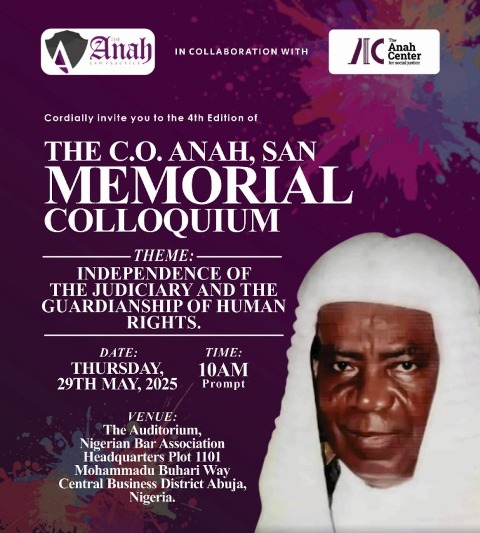By Ikechukwu Amaechi
I was over the moon on Monday watching the released, or is it rescued Kuriga schoolchildren in their resplendent attires at the Sir Kashim Ibrahim House, seat of Kaduna State Government, as their misfortune catapulted them to celebrities even if for a fleeting moment. The high and mighty doted on them and I said a quiet prayer for President Bola Tinubu and all those who facilitated their release.
It is not often that the dastardly act of kidnapping ends in praise and the payment of huge ransom does not guarantee safe return of the abductee(s). As someone who has had the misfortune of having my mother, a retired teacher, abducted and taken away for five days, I could easily relate with the overwhelming sense of relief felt by the parents of the schoolchildren on their safe return.
It is a harrowing experience that you cannot even wish your worst enemy. Here you are, utterly helpless and at the mercy of vicious, substance-abusing people who do not place any premium on human life and who know that there is little or no consequence for their nefarious actions in Nigeria.
When the news broke on March 7, 2024 that about 287 pupils of LEA primary school and students of Government Secondary School had been abducted in Kuriga, Chikun local government area of Kaduna State, my heart sank. A week earlier, on February 18, bandits had attacked the Gonin-Gora community, a suburb of Kaduna metropolis and abducted 16 residents. Then as Nigerians were bemoaning the Kuriga abductions, hoodlums laid siege on Tsangaya community in Sokoto State and went away with 16 students.
As if that was not traumatizing enough, the bandits impetuously demanded a N40 trillion ransom to release the Gonin-Gora 16. That was almost double the size of Nigeria’s N28.7 trillion 2024 budget. Then a week after carrying out their dastardly act, the Kuriga hoodlums added insult to injury when they demanded a N1 billion ransom with a 20-day ultimatum.
Jubril Aminu, who acted as a spokesman for the families of the hostages, said he received a call from the kidnappers. “They made a total of N1 billion ransom demand for all the pupils, students, and staff of the school. They gave an ultimatum to pay the ransom within 20 days, effective from the date of the kidnap. They said they would kill all the students and the staff if the ransom demand is not met.”
It was apparent at that point that nothing short of a miracle was going to bring the children back, particularly when President Tinubu said the government would not pay any ransom, because even if the terrorists had given a 20-year deadline, the entire Kuriga community couldn’t have raised such a colossal sum.
And, indeed, miracle happened. Instructively, that deadline would have elapsed on Wednesday, March 27, 2024, but the terrorists magnanimously, as the government would want us believe, decided to set their captives free on Sunday, three days earlier, unconditionally.
But were the schoolchildren released or rescued? The government is ambivalent in its response. Some people have asked what does it matter? And they have a point. What matters right now to those parents and guardians is that their children and wards are safely back. The negotiations that culminated in their freedom is none of their business.
The government which insisted that no ransom was paid seems to be comfortable with the idea of letting the sleeping dog lie. But as a sovereign nation, we should worry. Kidnapping is an act of terrorism and it is a heinous crime against the Nigerian state.
Assuming without conceding that, indeed, no ransom was paid, and the terrorists who abducted the school children simply had their own ‘road to Damascus’ experience as St Paul did in the Bible when he saw a blinding light and heard God’s voice and changed from being a persecutor and tormentor-in-chief of Christians to, perhaps, the greatest apostle, they must still account for their hideous acts.
But it doesn’t make any logical sense that a brood of vipers, which is what these bloodthirsty terrorists are, would successfully abduct hundreds of students and after almost three weeks, set their quarries free just because they saw the light.
So, while we are all euphoric and applaud the government for bringing back the schoolchildren, a lot of questions remain unanswered and it is important that they are answered.
Were the schoolchildren rescued or released? If they were released, on what conditions? What were the terms of the agreement? If ransom was not paid, what were the hoodlums given as a quid pro quo for being born again?
Another issue that this saga has thrown up is data. As a people we have no regards for facts and statistics either for purpose of reference or analysis. How many schoolchildren were abducted – the 287 that was announced by the school authorities or the 137 that were released according to Kaduna State Governor, Uba Sani? Where did the mix-up come from? Understandably, Governor Sani who announced on Sunday that “all of them have come back home safely,” was tetchy when pressed on the actual number of students involved.
“As the leader, I shouldn’t bother myself about figures. What is more important is the return of the children,” he said. Granted, he should be allowed to enjoy his day in the sun after all the sad stories of kidnappings and killings that have dogged his ten-month-old tenure as governor but the figures are as important as the safe return of the abductees and he should bother. Leadership is also about facts and figures and not conjectures. Has anyone been left behind? If yes, what will happen to such students now that national attention has shifted? Will they become like the over 100 Chibok girls abandoned by the Nigerian state since 2014 and forgotten?
But most importantly, how on earth were these schoolchildren, aged between nine and 15, taken from Kaduna where they were abducted to Zamfara where they were rescued, a distance of more than 200 kilometers (124 miles), as disclosed by the military spokesman Maj. Gen. Edward Buba?
Did they trek with their abductors from Kaduna to Zamfara without any casualties or were they transported? Ironically, the only person that reportedly died in this ordeal is the adult among them – the teacher. Granted, the military released pictures on Sunday showing the children looking worn out, covered in dust and still wearing their blue-white-and-brown uniforms while being transported, but those are not images of nine-year-old pupils that had trekked for 200 kilometres in the jungle for nearly three weeks.
Nigerians have a feeling that they are not being told the truth about this bourgeoning kidnapping industry which has become the most thriving business in the country.
And it is important they are assured that nobody is taking them for a ride. They deserve to know what is going on and who is behind these kidnappings on industrial scale and for what purpose.
Are the kidnappers in this all for the money or as their unofficial spokesman, Sheik Ahmad Abubakar Gumi, claims because they have a grouse against the Nigerian state and therefore the innocent schoolchildren must be collateral damage in their war of attrition?
It is important that there is clarity on this matter because at least 1,400 students have been kidnapped from Nigerian schools since 2014, when Boko Haram militants seized hundreds of schoolgirls from Borno State’s Chibok community. In a country with millions of out of school children, this is very bad signaling.
In January, civil society groups, under the aegis of the Civil Society Joint Action Group, said 17,469 Nigerians were abducted under the Muhammadu Buhari and Bola Tinubu administrations from 2019 to date. Though as to be expected, 90 per cent of the cases were recorded under Buhari’s watch, Tinubu seems determined not to be outdone by his predecessor. With what has happened since January, he is on course.
In a story in its March 23, 2024 edition titled, “Killing Fields: 6,931 people killed under Tinubu in 10 months,” Vanguard newspaper said as grim and scary as the figures are, they may well be conservative because some killings are under-reported or not reported at all.
Though the 6,931 is lower than the 8,356 folks lost to insecurity in Buhari’s first 10 months in office as recorded by the Nigeria Security Tracker (NST), a project of the Council on Foreign Relations’ Africa programme, which documented and mapped violence in Nigeria motivated by political, economic or social grievances, it is way higher than what happened under former President Goodluck Jonathan’s first 10 months in office from May 2011 to March 2012, when insecurity claimed 2,059 lives.
While we applaud President Tinubu for the “Kuriga miracle,” it is not yet uhuru. In case no one has told him, many Nigerian children whose only crime is to be born into a country that is spectacularly failing in its primary duty to the citizens, are languishing in the dens of kidnappers all over the country, but most especially in the North, with little or no hope of being released either out of the benevolence of their captors or rescued through state might.





